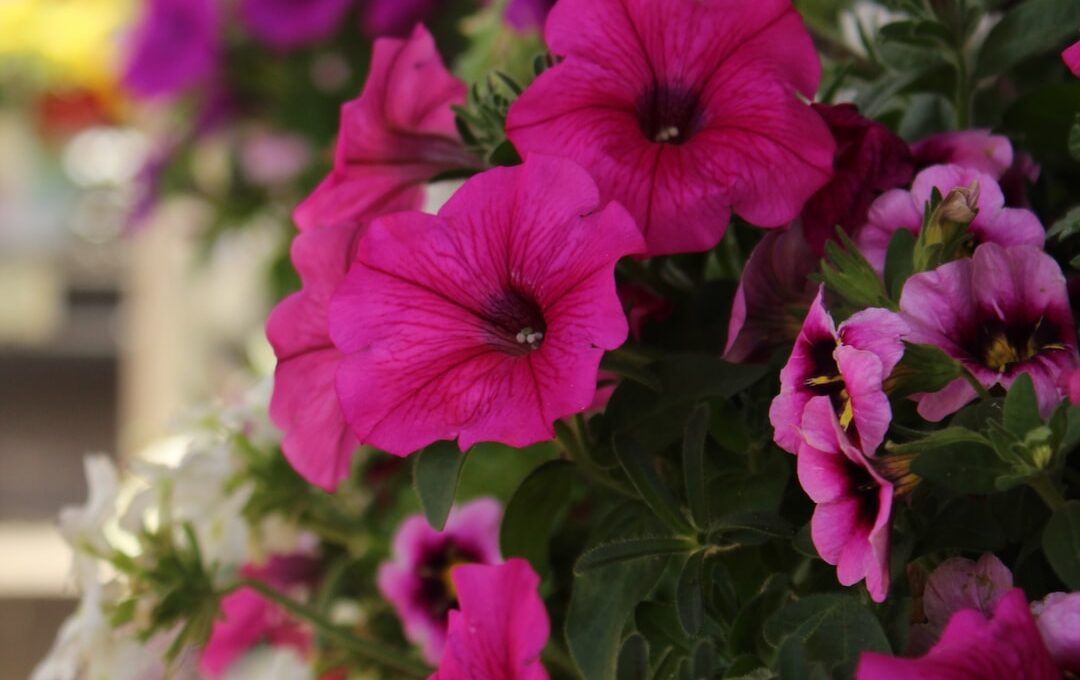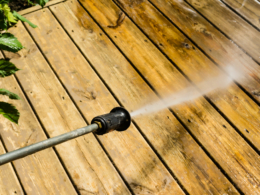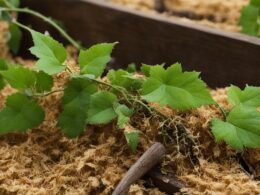Do you love having beautiful, vibrant flowers in your home or garden? Potted petunias are a popular choice, known for their stunning blooms and easy care. But how long can you expect these colorful flowers to last?
In this article, we will explore the lifespan of potted petunias and provide you with essential tips to ensure their longevity. Proper care and maintenance play a crucial role in extending the lifespan of your potted petunias. From choosing the right pot and soil to protecting them from extreme weather conditions, each step is essential. We will also highlight common mistakes to avoid, as well as signs that your petunias may be in decline.
By following our expert advice and providing regular maintenance, you can enjoy your potted petunias for an extended period. Whether you are a seasoned gardener or just starting, this article will equip you with the knowledge to keep your petunias thriving. So let’s dive in and learn how to make your potted petunias last longer!
Quick Summary
- Proper care and maintenance, including watering, fertilizing, and protection from extreme weather conditions, is essential for extending the lifespan of potted petunias.
- Overwatering and pest infestations are common mistakes that should be avoided.
- Regular maintenance, such as watering when the top inch of soil is dry and treating pests immediately, is crucial for prolonging the lifespan of potted petunias.
- Tips for care include avoiding overwatering, regularly fertilizing, deadheading for continuous blooming, inspecting for pests and diseases, and providing adequate sunlight and temperature.
Understanding the Lifespan of Potted Petunias
How long do potted petunias last? Well, let me tell you, they’ll keep blooming with vibrant colors for several months if you take good care of them! Understanding the growth cycle of potted petunias is key to ensuring their longevity.
These beautiful flowers go through several stages during their lifespan. First, they start as tiny seeds that need warmth and moisture to germinate. Once they sprout, they grow into healthy seedlings that can be transplanted into pots. As they continue to grow, they produce stunning blooms that last for several weeks.
To extend the lifespan of your potted petunias, it’s important to provide them with the right conditions. Make sure they receive at least six hours of direct sunlight daily and water them regularly, keeping the soil moist but not soaked. Additionally, fertilize them every two weeks with a balanced fertilizer to promote healthy growth and continuous flowering.
When winter approaches, you can overwinter your potted petunias to enjoy them for the next season. Start by cutting back the plants to about half their size and moving them to a cool, dark location with temperatures around 45-50°F (7-10°C). Water sparingly during this period, as the plants are in a dormant state. In early spring, bring them back to a warmer area and resume regular care.
By understanding the growth cycle of potted petunias and following these tips for overwintering, you can enjoy their vibrant blooms for several months and even extend their lifespan to the next season. So go ahead, give your potted petunias the care they deserve and watch them flourish!
Proper Care and Maintenance for Potted Petunias
To ensure your potted petunias thrive, you’ll need to provide them with proper care and maintenance. Here are some tips to help you keep your petunias healthy and beautiful:
-
Watering frequency: Petunias need regular watering, but don’t overwater them. Water them deeply when the top inch of soil feels dry, but make sure the water drains well to prevent root rot. It’s best to water them in the morning to allow the foliage to dry before nightfall.
-
Pruning techniques: Regular pruning is important to encourage bushy growth and promote more blooms. Use clean and sharp pruning shears to remove any dead or damaged leaves, flowers, or stems. Also, pinch off the tips of the branches to encourage branching and more flower production.
-
Avoid excessive fertilization: While petunias benefit from regular feeding, too much fertilizer can lead to leggy growth and fewer blooms. Use a balanced fertilizer with a ratio of 10-10-10 or 20-20-20, and apply it according to the instructions on the package.
-
Protect from extreme weather: Petunias are sensitive to harsh weather conditions, so it’s important to provide them with protection. During hot summer days, provide some shade or move the pots to a cooler location. In colder months, bring them indoors or cover them with a frost cloth to protect them from frost.
By following these care and maintenance tips, you can ensure that your potted petunias thrive and provide you with beautiful blooms throughout the season.
Choosing the Right Pot and Soil for Potted Petunias
When choosing the right pot and soil for your potted petunias, make sure you opt for a container with good drainage to prevent waterlogged roots. This is important because waterlogged roots can lead to root rot and the eventual death of your petunias. To ensure proper drainage, choose a pot with drainage holes at the bottom. Additionally, using a well-draining potting mix that is specifically formulated for container gardening can help promote healthy root growth.
In terms of pot size, it is essential to select a container that provides enough room for your petunias to grow. Petunias have a relatively shallow root system, so a pot that is about 6-8 inches deep should be sufficient. However, make sure the pot is wide enough to accommodate the spreading habit of petunias.
When it comes to fertilizers, there are several options available for potted petunias. Slow-release fertilizers can provide a steady supply of nutrients over an extended period. Alternatively, you can use liquid fertilizers, which can be applied more frequently but in smaller amounts. It is important to follow the instructions on the fertilizer packaging and avoid over-fertilizing, as this can lead to nutrient burn and damage to the plants.
By choosing the right pot and soil for your potted petunias and providing them with appropriate fertilizers, you can ensure their longevity and enjoy their vibrant blooms throughout the season. Remember to water your petunias regularly, but allow the soil to dry slightly between waterings to prevent overwatering.
Protecting Potted Petunias from Extreme Weather Conditions
To protect your potted petunias from extreme weather conditions, consider providing them with shelter or moving them to a more suitable location. Extreme weather can be tough on plants, but with a little extra care, you can keep your petunias safe and healthy.
Here are some tips to help you protect your potted petunias:
-
Protecting from pests:
- Keep an eye out for common pests like aphids or snails. Use organic pest control methods or insecticidal soap to keep them at bay.
- Place a layer of gravel or crushed eggshells on top of the soil to deter slugs and snails from munching on your petunias.
-
Preventing root rot:
- Ensure that your pots have drainage holes to allow excess water to escape. This will help prevent water from pooling around the roots and causing rot.
- Avoid overwatering your petunias. Check the soil moisture level regularly and only water when the top inch of soil feels dry to the touch.
By taking these steps to protect your potted petunias from pests and prevent root rot, you can ensure that your plants stay healthy and vibrant, even in extreme weather conditions. Remember, a little extra care goes a long way in keeping your petunias safe and thriving.
Avoiding Common Mistakes in Potted Petunia Care
One important tip for successfully caring for potted petunias is to avoid common mistakes that can hinder their growth and health. To ensure the longevity of your potted petunias, it’s crucial to be mindful of overwatering and preventing pest infestations.
Overwatering is a common mistake that many gardeners make when caring for potted petunias. While it may seem like a good idea to give them plenty of water, excessive moisture can lead to root rot and other fungal diseases. To avoid overwatering, make sure to check the soil moisture level before watering. Stick your finger about an inch deep into the soil, and if it feels dry, it’s time to water. Additionally, ensure proper drainage in the pot to prevent water from pooling at the bottom.
Pest infestations can also be detrimental to the health of potted petunias. Common pests that may attack petunias include aphids, spider mites, and whiteflies. To prevent these pests, regularly inspect your petunias for any signs of infestation, such as yellowing leaves or sticky residue. If you spot any pests, treat them immediately with organic insecticidal soap or neem oil. Additionally, encourage beneficial insects, such as ladybugs and lacewings, which feed on these pests.
By avoiding overwatering and preventing pest infestations, you can ensure the long-lasting health and beauty of your potted petunias. Remember to water them appropriately and keep a close eye on any signs of pests. Following these tips will help your petunias thrive and bring joy to your garden for an extended period.
Extending the Lifespan of Potted Petunias with Regular Maintenance
Maintaining your potted petunias with regular care and attention will ensure their vibrant beauty continues to fill your heart. To extend the lifespan of your petunias and maximize their longevity, there are a few key steps you can take.
Firstly, make sure to water your petunias properly. These flowers thrive in well-drained soil, so avoid overwatering, which can lead to root rot. Instead, water them deeply but less frequently.
Secondly, fertilize your petunias regularly. Choose a balanced fertilizer and apply it according to the instructions on the packaging. This will provide your petunias with the necessary nutrients to stay healthy and vibrant.
Additionally, deadhead your petunias to encourage continuous blooming. By removing spent flowers, you’ll promote new growth and prolong the lifespan of your plants.
Lastly, keep an eye out for pests and diseases. Regularly inspect your petunias for any signs of damage or infestation and take immediate action if necessary.
By following these simple steps, you can ensure that your potted petunias thrive and bring joy to your garden for an extended period of time.
How Long Can Potted Creeping Jenny Last?
The potted creeping jenny lifespan explained varies depending on various factors. Generally, if well cared for, creeping jenny can thrive for several years in a pot. Adequate sunlight, watering, and occasional pruning can help extend its lifespan and keep this beautiful ground cover looking vibrant and healthy. Consider repotting every few years to ensure optimal growth.
Signs that Your Potted Petunias May be in Decline
Keep an eye out for wilted leaves, yellowing foliage, and drooping stems as signs that your potted petunias may be in decline. These warning signs indicate that your petunias aren’t receiving the proper care and attention they need to thrive. When you notice these signs, it’s important to take action immediately to prevent further decline.
To revive declining petunias, start by checking the soil moisture. Overwatering or underwatering can both cause stress to the plants. Ensure that the soil is moist but not waterlogged. Adjust your watering schedule accordingly.
Next, inspect the roots of your petunias. Healthy roots should be white or light-colored. If you notice dark, mushy roots, it may be a sign of root rot. Remove any affected roots and replant the petunias in fresh soil.
Proper fertilization is also crucial for reviving declining petunias. Use a balanced fertilizer specifically formulated for flowering plants. Follow the instructions on the packaging to avoid overfertilization, which can lead to burned foliage.
Provide adequate sunlight and temperature for your petunias. They thrive in full sun and prefer temperatures between 65°F and 75°F. If your petunias aren’t getting enough sunlight or are exposed to extreme temperatures, move them to a more suitable location.
By being vigilant and taking these steps to revive your declining petunias, you can extend their lifespan and enjoy their vibrant blooms for longer.
Troubleshooting Common Issues with Potted Petunias
Having trouble with your potted petunias? Let’s troubleshoot some common issues together! Here are some tips to help you troubleshoot watering issues and prevent pest infestations:
-
Watering issues: Ensure that your petunias are receiving the right amount of water. Overwatering can lead to root rot, while underwatering can cause wilting and stunted growth. To troubleshoot watering issues:
- Check the soil moisture regularly by sticking your finger about an inch deep into the soil. If it feels dry, water your petunias.
- Make sure your pots have drainage holes to prevent water from accumulating at the bottom.
- Avoid overhead watering, as it can promote the growth of fungal diseases. Water the soil directly instead.
-
Preventing pest infestations: Pests like aphids, slugs, and snails can damage your potted petunias. To keep them at bay:
- Inspect your plants regularly for signs of pests, such as holes in leaves or sticky residue.
- Remove any affected leaves or plants to prevent the infestation from spreading.
- Use organic pest control methods like neem oil or insecticidal soap to treat infestations.
By troubleshooting watering issues and preventing pest infestations, you can help your potted petunias thrive and enjoy a long lifespan. Remember to always prioritize the safety of your plants and use appropriate methods for pest control.
Frequently Asked Questions
Can potted petunias be grown indoors?
Yes, potted petunias can be grown indoors. However, they may face challenges such as limited sunlight and proper air circulation. Ensure they receive enough light and avoid overwatering to keep them healthy indoors.
How often should I fertilize my potted petunias?
To prevent over fertilization in your potted petunias, choose a balanced fertilizer with equal nitrogen, phosphorus, and potassium. Apply it every 2-3 weeks during the growing season, following the package instructions for the appropriate amount.
Can potted petunias be grown from seeds or should I buy established plants?
Starting petunias from seeds is possible but requires more care and time. Buying established plants ensures quicker and safer results. Consider the benefits of buying established plants, such as their maturity and disease resistance.
What are the best companion plants to grow with potted petunias?
To ensure a safe and beneficial garden, consider planting potted petunias with marigolds. They offer natural pest control and enhance each other’s growth. Additionally, you can companion plant herbs like basil and rosemary to deter pests and enhance flavor.
Can potted petunias be propagated through cuttings?
Yes, potted petunias can be easily propagated through cuttings. To ensure successful propagation, use rooting hormone to encourage root growth. It’s a safe and effective method for expanding your petunia collection.
Conclusion
In conclusion, taking proper care of potted petunias can help extend their lifespan and keep them thriving. Choose the right pot and soil, protect them from extreme weather conditions, and avoid common mistakes in their care.
Regular maintenance is key to keeping your potted petunias healthy and vibrant. Be attentive to signs of decline and troubleshoot any issues that may arise. With the right care and attention, your potted petunias can provide beauty and enjoyment for a long time.









